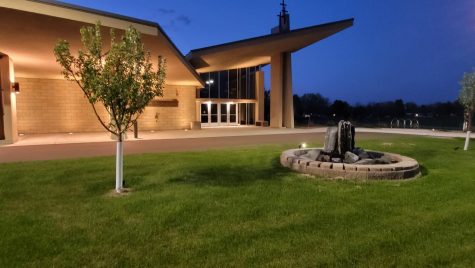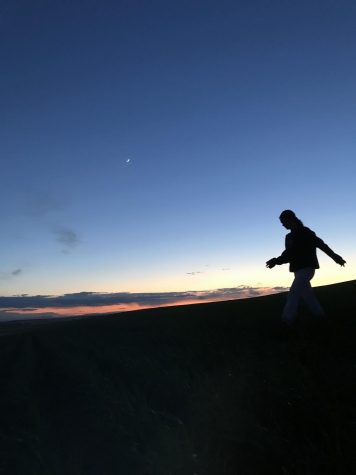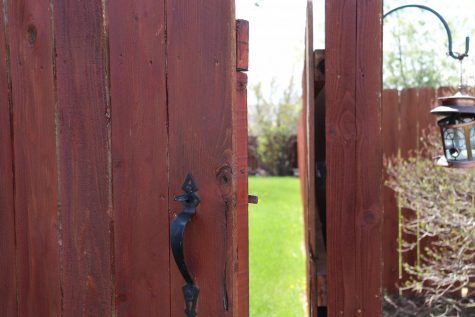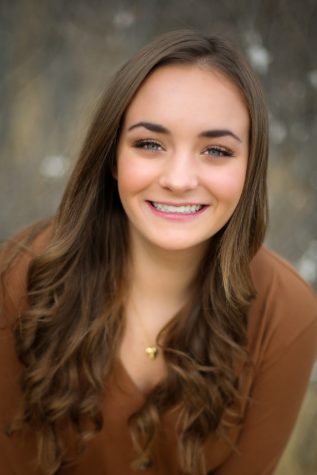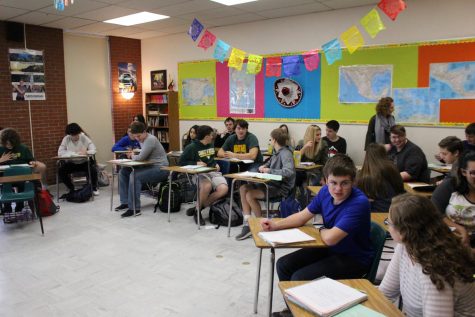CMR students and teachers navigate learning amid a pandemic
October 8, 2020
The COVID-19 global pandemic started influencing the way schools educate students last spring, and it shows no sign of stopping its disruption of normalcy during the 2020-2021 school year. While schools across the country reopen, students and staff have a raised sense of responsibility for keeping everyone safe.
Students are required to wear masks while in schools, aside from occasional socially distanced breaks throughout the day. Everyone must follow the new “gel in, gel out” policy, which requires students to use hand sanitizer upon entry into the building and each classroom, and then again during exit times.
Senior Gabbie Stull feels safe at CMR under the new guidelines, but she said she is concerned that many students may not be taking the proper precautions.
“I think most of the upperclassmen are taking it seriously, but I have noticed lots of underclassmen not distancing themselves, not wearing their masks properly and not following the simple rules provided to keep us all safe,” Stull said.
The senior says her personal obligation to following the rules may be crucial than other students.
“I feel like I am protecting myself well, but I see many people doing the opposite, which not only scares me for their safety but also my safety,” she said. “I have parents with pre-existing conditions related to their respiratory systems.”
Freshman David Mansfield says that his peers are far from taking all of the necessary precautions to prevent the spread of COVID-19.
“My peers have not really been practicing social distancing,” Mansfield said. “Yes, they are wearing masks, but that doesn’t stop people from grouping up together [and] sharing water bottles.”
Another change from past school years is the introduction of a block schedule, in an effort to minimize transition times throughout the school day. Students follow a specific schedule based on alternating “A” and “B” days. On “A” days, students attend periods 0, 2, 4, and 6. Periods 1, 3, 5, and 7 fall on “B” days. The concept is simple, but teachers and students are still adjusting to 97 minute class periods.
Freshman David Mansfield, who has classes during all seven periods, says it makes for a long day.
“I like that with block periods, you are able to focus and spend more time on classes throughout the day,” he said. “I don’t like that we have to sit in a class for an hour and a half.”
For upperclassmen like Gabbie Stull, the block schedule often provides breaks during open periods.
“I actually really enjoy the block schedule because it gives me a nice break period in between classes.”
Warren Mayes, a math teacher at CMR, was apprehensive about block schedules at first, but believes students and staff will make the adjustment over time.
“I will just have to change my teaching a little bit,” he said. “I’ll do a little lecture, give them time to work, and break it up a little bit.”
Mayes says students lose focus over a 97-minute period, and the key to success is to keep it lively. While he is excited to have students back in the classroom, he said that another challenge has been getting to know new students.
“I can’t put the name with the face as well as before,” he said. “It’s going to take me longer to learn names and students are going to have to be patient with me.”
Mayes is confident that teachers will be able to provide quality education through Google Classroom in the event online learning returns. However, he is aware of the challenges.
“It’s been a trying time and everyone has been under a lot of stress caused by the changing dynamics of the situation,” he said. “Overall, I believe that people are adjusting and coping.”
Mayes says that the ability to adjust and adapt to the changing situation is the only way schools can get through this nationwide. As an Air Force veteran, the teacher often recalls a phrase from his years in the military, “flexibility is the key to airpower.”
“You could take that same idea and say that flexibility is the key to a successful learning environment,” Mayes said.

